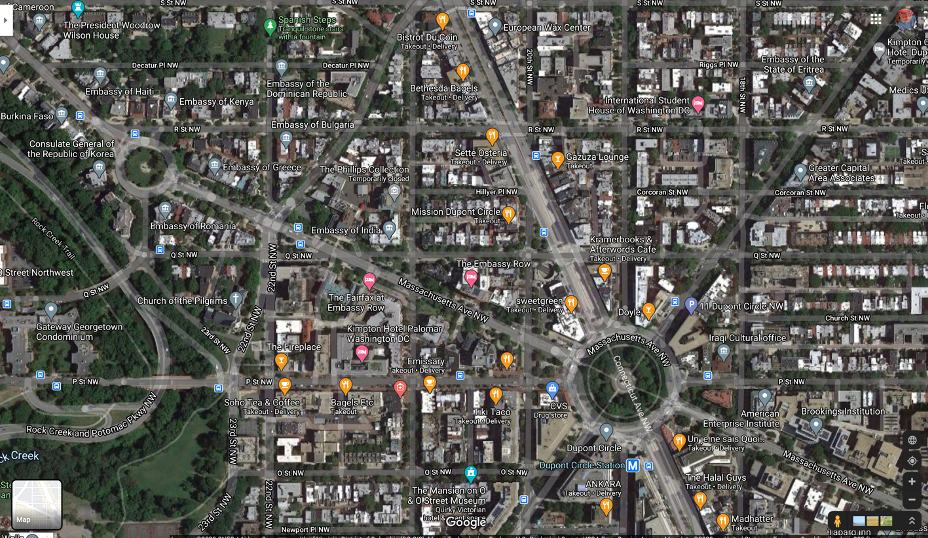Context from 1.2: Dupont Circle is nestled between the intersection of three major avenues; New Hampshire, Connecticut, and Massachusetts. Motorists, however, are not the primary occupants of the space, they come second to pedestrians. The inner circle is shaded by lovely old growth trees, at the center a statue of a civil war general unbeknown to the people who congregate there. Benches form a second circle and third circle, around the park, their occupants defending the small park, offering protection reminiscent of a Roman citadel.
1.3:
In Dupont Circle the most significant monuments are the interior park in the circle as well as the metro station. The commercial areas on the peripheral of the circle fosters constant simple transient public interaction that is more satisfying than the lunch rush and commuting hours seen on workdays.
Dupont Circle is the name of the greater neighborhood, whose borders I consider to be S and M Streets to the North and South, then 22nd and 16th to the West and East, respectively. The circle is the proper center and is a node without doubt. I felt an ariel map including Rock Creek Park (which locals just call The Park) and Embassy Row was necessary to incorporate the peripheral natural geography and international influences that shape how people use the public space. Bikers or joggers in action can be founded scattered about the area because of the proximity to The Park. The bike racks are consistently full and if you catch the circle on the right day, you may see the DC Bike Party hosting a protest or event.
The circle is the single most significant point in the neighborhood, the product of L’Enfant’s design for an elegant European style city. The area has a significant population of unsheltered people, who are just as much residents, who find the park to be a social theatre to congregate. The farmers market crowd and first tinder dates also find the center circle to be a place to congregate, as do groups of old friends. The neighborhood is distinct with Second Empire, International, and Baroque architecture dotted throughout. Many of the buildings are multi-use which further drives more social interaction beyond the node of the center circle. None of my friends or myself live in Dupont Circle, rather we find the circle to be a place for us to meet since we all live within a 10-minute train ride from there, in different directions. The traffic circle is a busy place of constant interaction, and the social life about it follows suit.
Urban divisions are apparent in the changing demographics of the greater Dupont Circle neighborhood. Poor Queer folks lived in the area first throughout the 80s and 90s, almost serving as a buffer between the affluent white residential neighborhoods in upper northwest where lawyers and such resided, and impoverished Black communities. Within the past 20 years an influx of young white singles has found the area exciting or vibrant and which has driven gentrification. The whole scope of this history of social division is not spoken, rather it can be witnessed in the interactions between unsheltered people living in tents on a median above the tunnel that goes below the circle and police. Tensions between law enforcement and folks living vicariously is a continuous issue with Black, Queer, and unsheltered folks in the city.

